Occupational Safety Training for Nail Gun Operation
99,000 ₫
Note: The above price is calculated for one person. Prices may vary depending on the number of trainees participating in the course and market fluctuations. For more accurate pricing information, please refer to the price list or contact our consultants directly.
Occupational safety is an important issue when operating a nail gun and needs to be addressed promptly to ensure the health and safety of workers while also enhancing the reputation of businesses here. The Occupational Safety Training course is one of the effective solutions to raise awareness of accident prevention among workers when operating nail guns.
Table of Contents
Toggle1. Overview of Nail Guns
a. What is a Nail Gun?
A nail gun is an electric or mechanical device used to drive staples or nails into hard materials such as wood, metal, or concrete. Instead of manually hammering nails, a nail gun allows users to drive nails quickly and efficiently.
Nail guns usually use air pressure or electricity to propel nails out of the barrel with enough force and speed to penetrate the target material. There are various types of nail guns, including those for flat nails, round nails, and conical nails, depending on the specific application.
Nail guns are commonly used in construction and mechanical works to attach, fasten, or connect parts quickly and accurately. However, caution is required, as improper use or failure to follow safety rules can cause injury.

b. How a Nail Gun Works
Here is how a nail gun operates:
- Loading nails: The user must load nails into the gun’s magazine. Nails are typically stacked in a coil or placed in a box depending on the type of gun.
- Preparing the driving force: To create the force needed to drive the nails, the nail gun uses compressed air or electricity. For pneumatic nail guns, an air compressor generates pressure in the chamber. For electric nail guns, a mechanical or electrical mechanism provides the driving force.
- Triggering: The user presses the trigger, usually located beneath the barrel, to activate the device. This engages the loading or compression mechanism, propelling the nail out of the barrel with enough force and speed to penetrate the target material.
- Driving the nail into the material: The nail is forcefully driven out of the barrel and penetrates the target material. Typically, nails have pointed or conical heads for easier penetration and guidance.
- Safety and inspection: Some nail guns have safety mechanisms to prevent accidental firing, and users must follow safety rules and carefully inspect the gun before use.

c. Industries that Use Nail Guns
Nail guns are widely used across various manufacturing and construction industries. Some of the main industries include:
- Construction: Nail guns are essential tools for fastening nails into wooden frames, brick panels, plywood, and other building materials.
- Wood Industry: Widely used in furniture, windows, doors, and other wood products to fasten and connect wooden parts.
- Mechanical and Metal Manufacturing: Used to attach metal box lids, screws, or other metal components.
- Container and Packaging Production: Used to connect parts and metal sheets in container and packaging production processes.
- Furniture and Interior Decoration: Helps assemble furniture components quickly and accurately.
- Repair and Maintenance: Used in quick attachment of parts or materials during repair and maintenance works.
- Oven and Air Conditioning Manufacturing: Can be used to assemble parts of ovens, air conditioners, and other electronic devices.
2. Overview of Safety Training for Operating Nail Guns
a. What is Occupational Safety Training?
- Occupational safety training for operating nail guns consists of sessions designed to equip workers with knowledge to prevent work-related accidents. Workers who directly operate nail guns belong to Group 3.
- The safety training course helps workers recognize and avoid hazards, reducing the risk of accidents while working.
REGISTER FOR OCCUPATIONAL SAFETY TRAINING SERVICE
b. Training Duration
Initial safety training:
- Total training hours must be at least 24 hours, including assessment time.
- 8 hours of theory on policies and labor safety laws
- 8 hours of theory on basic occupational safety knowledge
- 4 hours of theory on specialized content
- 2 hours of practical training on specialized content
- 2 hours of final theoretical assessment
Training centers usually divide the course into several sessions depending on workers’ schedules. Typically, there are 6 sessions over 3 days if the company arranges continuous learning time.
Periodic safety training:
- Before the occupational safety card expires, workers who wish to renew must complete periodic safety training, with the duration of periodic training being at least 50% of the initial training duration.
Note: Total periodic training must be at least 12 hours, including assessment. After successfully completing the course and passing the test, the worker is reissued a renewed occupational safety card.
c. Training Content
| No. | TRAINING CONTENT | TRAINING HOURS | |||
| Total | Including | ||||
| Theory | Practical | Assessment | |||
| I | Policies and Occupational Safety Laws | 8 | 8 | 0 | 0 |
| 1 | Overview of legal documents regarding occupational safety and hygiene. | 6 | 6 | ||
| 2 | System of standards and technical regulations on occupational safety and hygiene. | 1 | 1 | ||
| 3 | Specific regulations of government agencies regarding occupational safety and hygiene for new, expanded, or renovated facilities, including production, use, maintenance, storage, and inspection of machines, equipment, and hazardous materials. | 1 | 1 | ||
| II | Basic Occupational Safety Knowledge | 8 | 8 | 0 | 0 |
| 1 | Basic knowledge of hazards and harmful factors at the workplace. | 4 | 4 | ||
| 2 | Methods to improve working conditions. | 1 | 1 | ||
| 3 | Safety culture in production and business. | 1 | 1 | ||
| 4 | Rights and responsibilities of employers and employees; policies regarding occupational safety; functions of safety personnel networks. | 1 | 1 | ||
| 5 | Workplace safety regulations, signs, and use of safety equipment and personal protective equipment; first aid and occupational disease prevention skills. | 1 | 1 | ||
| III | Specialized Training Content | 6 | 4 | 2 | 0 |
| Comprehensive knowledge of machinery, equipment, hazardous materials; risk assessment and management; safe working procedures with machines and hazardous substances. | 6 | 4 | 2 | ||
| IV | Final Safety Assessment | 2 | 2 | 0 | 0 |
| Total | 24 | 22 | 2 | ||
See more training contents of 6 groups
d. Occupational Safety Card
After completing the safety training course and passing the assessment, workers are issued a Group 3 Occupational Safety Card (commonly called Group 3 Occupational Safety Certificate).
The Group 3 safety card shows the worker’s full name, date of birth, job, and specific working environment, as well as training duration, official stamp, and signature confirming course completion.
According to Clause 2 of Article 24, Decree 44/2016/ND-CP, there are two cases:
- If the employer and employee have a labor contract, the employer must sign and stamp the safety card after the employee completes the Group 3 safety training course and passes the assessment.
- If the worker is freelance or seasonal and does not have a labor contract, the training unit must sign and stamp the safety card after the worker completes the safety training and passes the assessment.

3. Hazards When Operating a Nail Gun
Operating a nail gun can be hazardous if safety rules are not followed and the tool is not used correctly. Below are some common hazards when using a nail gun:
- Injury and harm: A nail gun can cause injuries if not used carefully. Nails may penetrate materials and injure the user or people nearby if not properly controlled.
- Loss of control: A nail gun can become dangerous if not handled carefully. Users must ensure the gun does not fire unnecessarily and always follow safety rules, especially when moving the gun.
- Loss of balance: Using a nail gun at height or on unstable platforms carries the risk of losing balance and falling. This can lead to serious injuries or other accidents.
- Fire or explosion: Pneumatic or electric nail guns, if not properly checked and maintained, may pose fire or explosion risks, or cause gas leaks.
- Using the wrong nails: Using the wrong type or size of nails for a specific application can result in nails not securing properly or breaking, creating a risk of injury.
- Insufficiently strong materials: When using a nail gun, the material must be strong enough to withstand the nail’s force. Using it on thin or weak materials may cause cracking, splintering, or collapse.
- Not following safety rules: Ignoring general safety rules when using a nail gun, including wearing safety goggles, keeping fingers away from the gun muzzle, and not aiming at people, can cause accidents.

4. Measures to Prevent Workplace Accidents When Using a Nail Gun
To prevent workplace accidents when operating a nail gun, the following safety measures must be observed:
- Training and instruction: Before using a nail gun, users must be trained on how to safely operate the equipment. This includes checking and maintaining the gun, basic safety rules, and using the correct nails for specific applications.
- Use safety goggles: Users should wear safety goggles to protect eyes from small explosions, debris, or dust.
- Working conditions: Ensure the working environment is comfortable and distraction-free, especially when working at height or on unstable platforms.
- Check nails: Before use, inspect nails for any damage and make sure they are strong enough to penetrate the target material.
- Use the correct type of nails: Select the right type and size of nails for the specific application. Ensure nails are long enough to penetrate the target material.
- Do not aim at people: Always point the nail gun at the target material and never at people. Ensure no one is in front of or behind the material.
- Use the safety lock: If the nail gun has a safety lock, activate it until ready to fire at the target material. After completing the job, deactivate the safety lock.
- Periodic inspection of the nail gun to detect early safety issues such as damage, wear, or mechanical faults, thereby reducing workplace accident risks.
5. Benefits of Occupational Safety Training
An Toàn Nam Việt provides businesses with the following benefits upon completing occupational safety training courses in accordance with Decree 44/2016/ND – CP on occupational safety and hygiene for companies and enterprises.
- Workers can recognize potential workplace hazards and take preventive measures to avoid accidents.
- Businesses can establish risk prevention measures in production, operation, and maintenance processes.
- Reduce costs associated with potential workplace safety hazards.
- Uninterrupted production increases labor productivity and product quality.
- Compliance with labor safety regulations helps avoid legal risks.
- Enhances corporate reputation and professionalism, elevating the brand image of the business.
Nam Việt’s training courses provide a proactive solution to prevent external risks from affecting individuals, helping them avoid potential injuries or even fatalities.
REGISTER FOR OCCUPATIONAL SAFETY TRAINING SERVICE
6. Customer Feedback After Completing Training
An Toàn Nam Việt has years of experience partnering with businesses across Vietnam, particularly in the southern provinces. This responsibility is invaluable, which is why our Occupational Safety Training programs are continuously enhanced for professionalism. Our growth is driven by both positive feedback and constructive suggestions from our clients. Below are testimonials from our partners:
See more customer interviews after using our services at An Toàn Nam Việt
7. Occupational Safety Training Capability of An Toàn Nam Việt
An Toàn Nam Việt is a reputable and high-quality occupational safety training center in Vietnam. Our training sessions are held continuously at factories, production workshops, and construction sites across all 63 provinces in Vietnam.
REGISTER FOR OCCUPATIONAL SAFETY TRAINING SERVICE
Occupational Safety Training License
- An Toàn Nam Việt has been inspected and certified by the Department of Safety under the Ministry of Labor – Invalids and Social Affairs as meeting the requirements for conducting occupational safety and hygiene training. This strengthens our capacity to provide occupational safety training.

Training Materials and Lectures
- Before being included in OST courses, our training materials are reviewed to ensure accuracy and practical effectiveness.
- Our instructors’ teaching methods follow the standards of An Toàn Nam Việt, developed from expert research in occupational safety and hygiene training to maximize learner comprehension.
Facilities
- Controlling classroom factors affecting the training process enhances teaching efficiency and learner knowledge absorption.
- Our training facilities provide spacious classrooms with proper lighting, equipment, and training tools, etc.
8. Nationwide Reputable Safety Training Center
At An Toàn Nam Việt, we prioritize the professional mission of occupational safety training. Educating workers on self-protection equips them with safety skills vital to their livelihoods, contributing to national development.
We prepare meticulously for effective training, from tools and teaching equipment to curriculum, materials, audio, and lighting.
Our instructors are experts with years of experience, including research on hazard identification and prevention across various industries.
Lectures are practical, engaging, and easy to understand, ensuring comfort and maximum learning for participants. Knowledge is aligned with Decree 44/2016/ND-CP.
This enables workers to know hazard prevention measures, self-protection techniques, and apply them appropriately in real work scenarios.
Our training center proudly offers professional and reliable occupational safety training with the following advantages:
- Competitive training costs without compromising quality.
- Flexible training schedules aligned with company operations.
- Quick and legally compliant issuance of safety training certificates.
- Experienced instructors with many years in the field.
- Controlled classroom environment to enhance teaching efficiency and knowledge retention.
- Courses tailored to occupational safety needs of businesses.
- An Toàn Nam Việt provides dedicated, professional support promptly and accurately.

9. Additional Occupational Safety Training Resources
- Occupational safety materials for operating a nail gun
- Complete occupational safety training materials
- Occupational safety training test set
- Multiple-choice safety test for operating a nail gun
- Slide presentation for occupational safety training when operating a nail gun
1 review for Occupational Safety Training for Nail Gun Operation
No comments yet

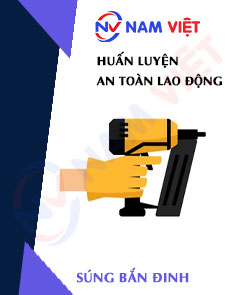
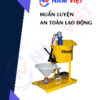
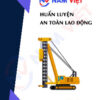



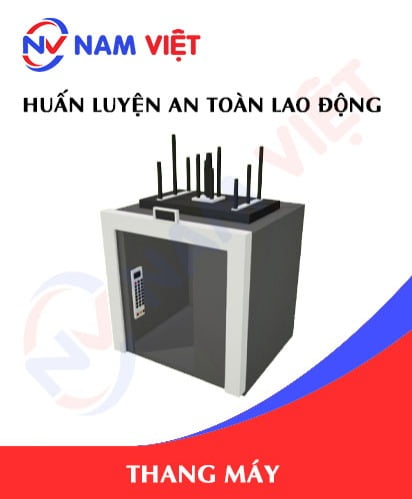

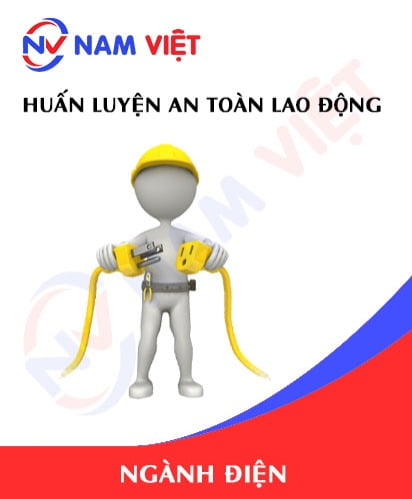





phanminhhang341
Good labor safety unit